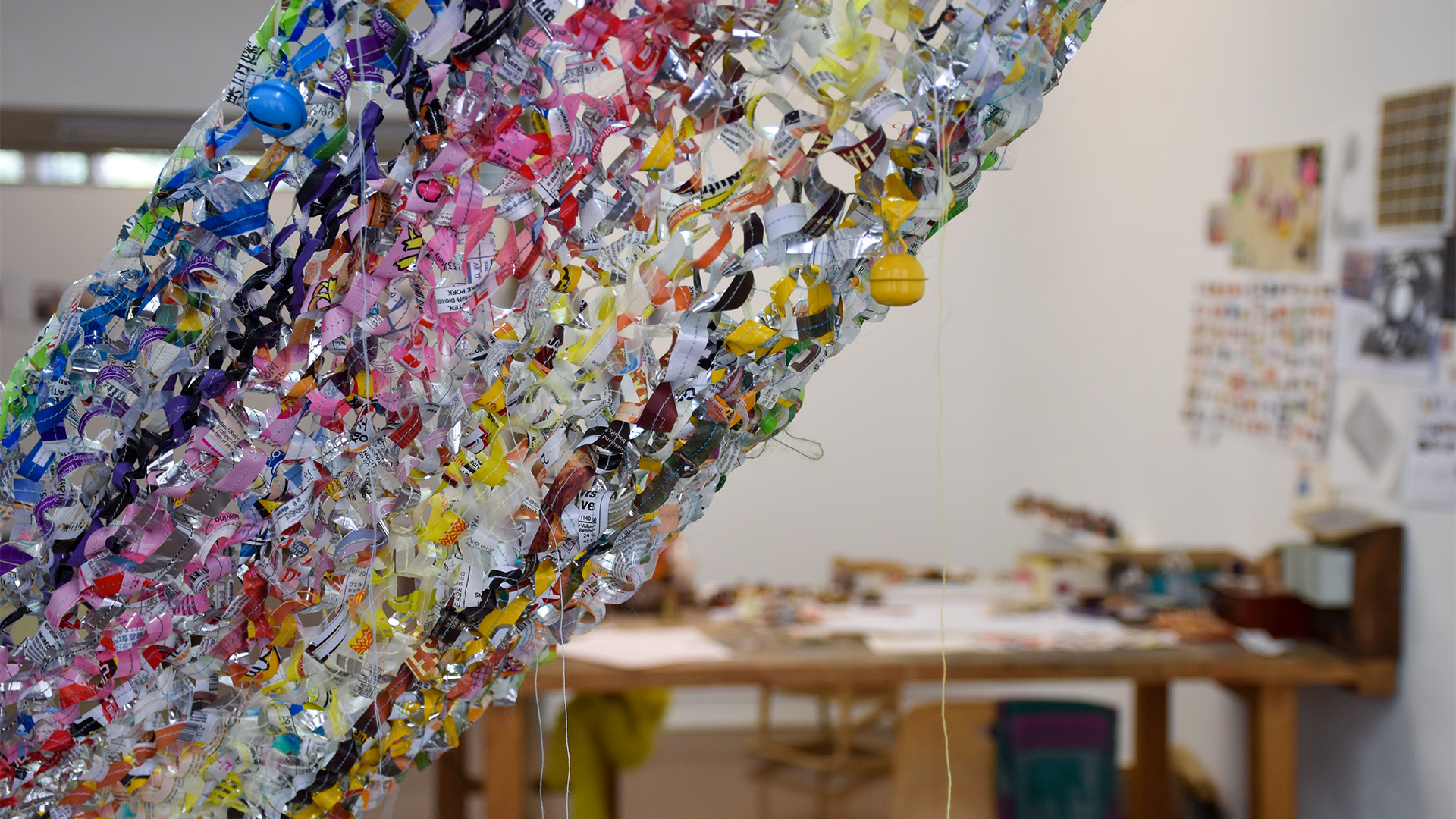Yingjie Chen,
Class of 2022
Designer
Ubiquitous Plastic
Class of 2022
Designer
Ubiquitous Plastic
If the 20th century was a summer of abundance, when we consumed and threw away with abandon, the 21st century will be defined as an autumn of scarcity, as we must conserve resources and remain mindful of the planet
(Justin McGuirk, 2021).
(Justin McGuirk, 2021).

In such an age, can art and design in higher education uphold sustainability and enable socially responsible developments for a new generation of students? Can art and design education counter the infiltration of the ubiquitous plastic culture? How should we face the coming 'winter'?
The starting point of my practice was that I did not want to create more 'rubbish' through the process, and so I decided to use plastic packaging as my material. In addition to the wealth of information about plastic causing ocean pollution and the discovery of microplastics in human blood (Damian Carrington, 2022), the latest report on plastic packaging in the UK shows that plastic packaging can have various benefits and advantages for sustainability (UK Parliament, 2022). This strange contradiction made me realise that plastic has become a culture, not only in the blood but also in people's subconscious. With the certainty of the constant production of recycled materials, the symbiotic relationship between humans and plastic may usher in a passive aesthetic change.
The starting point of my practice was that I did not want to create more 'rubbish' through the process, and so I decided to use plastic packaging as my material. In addition to the wealth of information about plastic causing ocean pollution and the discovery of microplastics in human blood (Damian Carrington, 2022), the latest report on plastic packaging in the UK shows that plastic packaging can have various benefits and advantages for sustainability (UK Parliament, 2022). This strange contradiction made me realise that plastic has become a culture, not only in the blood but also in people's subconscious. With the certainty of the constant production of recycled materials, the symbiotic relationship between humans and plastic may usher in a passive aesthetic change.